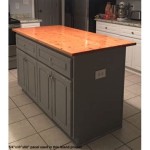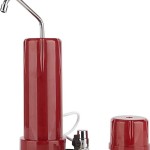Aquasana Countertop Water Filter Troubleshooting: A Comprehensive Guide
The Aquasana countertop water filter system is a popular choice for those seeking to improve the quality of their tap water without the complexity of under-sink installations. However, like any appliance, occasional issues can arise. This article provides a detailed troubleshooting guide for common problems encountered with Aquasana countertop water filters, offering potential solutions to restore optimal performance.
Before embarking on any troubleshooting steps, it is crucial to ensure the system is properly installed according to the manufacturer's instructions. Verify all connections are secure and that the diverter valve is correctly attached to the faucet. Furthermore, it is vital to understand the specific model of the Aquasana countertop filter being used, as certain nuances may exist between different models. Manufacturer documentation in the form of guide books are very valuable in understanding the specific models.
Reduced Water Flow Rate
One of the most frequently reported issues with countertop water filters is a decrease in water flow rate. This can manifest as a slow trickle or a significant reduction in the time it takes to fill a glass. Several factors can contribute to this problem, each requiring a specific approach to diagnosis and resolution.
The most common culprit is a clogged filter. As the filter removes contaminants from the water, it gradually accumulates sediment and other particles, restricting water flow. The lifespan of the filter is directly related to the quality of the incoming water and the amount of water filtered. Water with high sediment concentration will lead to earlier filter replacements. Regularly replacing the filters, as recommended by Aquasana, which is typically every six months, is essential for maintaining optimal flow rate. Consult the filter replacement indicator for specific guidance. It is crucial to replace the filters with the correct replacement types.
To determine if the filter is the cause, bypass the filter system by disconnecting it from the faucet. If the water flow is normal when the filter is bypassed, this confirms that the filter is indeed the source of the problem. Replacing the filter with a new one should restore the flow rate. Ensure the replacement filter is correctly installed and seated properly within the filter housing.
Another potential cause of reduced flow is low water pressure from the main water supply. This issue is not specific to the water filter but affects all water fixtures in the house. If the water pressure is generally low, contact the local water utility company to inquire about potential problems in the water supply system. Consider installing a water pressure booster pump if the problem persists after contacting the water utility.
The diverter valve, which switches the water flow between the faucet and the filter, can also become partially blocked with sediment or mineral deposits. Disconnect the diverter valve and inspect it for any visible obstructions. Clean the valve thoroughly with a mild detergent and a soft brush. Rinse it thoroughly before reattaching it to the faucet. Ensure there is no leakage from the diverter valve after reconnection.
Kinks or bends in the tubing connecting the filter to the faucet can also restrict water flow. Inspect the tubing for any visible damage or restrictions. Straighten any kinks and ensure the tubing is not pinched or compressed. Replacing the tubing entirely may be necessary if it is severely damaged.
Unusual Taste or Odor in Filtered Water
Another common concern is the presence of an unusual taste or odor in the filtered water. While the primary purpose of the filter is to remove contaminants, certain factors can contribute to undesirable tastes or smells.
A new filter may initially release a slight plastic or rubbery taste, which is normal and typically dissipates within the first few gallons of water filtered. Flush the filter thoroughly by running water through it for several minutes before using it for drinking or cooking. If the taste persists after flushing, contact Aquasana customer service for assistance.
If the taste or odor appears after the filter has been in use for some time, it may indicate that the filter is nearing the end of its lifespan or that the incoming water contains a high concentration of specific contaminants. As filters age, their ability to effectively remove contaminants diminishes. Replacing the filter is the first step in addressing this issue. Consider using a more advanced filter if local water conditions are known to be poor.
The source water itself may contain substances that contribute to the taste or odor. For example, high levels of chlorine can result in a distinct chlorine taste. While the Aquasana filter is designed to reduce chlorine, it may not completely eliminate it, especially in water with extremely high chlorine concentrations. Allowing the filtered water to sit in an open container for a short period can help to dissipate some of the chlorine.
Bacterial contamination within the filter system is another potential cause of taste or odor problems. This is more likely to occur if the filter is not used for an extended period, allowing bacteria to multiply. Regularly use the filter to maintain a consistent water flow and prevent bacterial growth. If the filter has been unused for several weeks, flush it thoroughly with a large volume of water before using it again. Consider sanitizing the system if bacterial contamination is suspected.
To sanitize the system, disconnect it from the faucet and flush it with a solution of diluted household bleach (approximately one tablespoon of bleach per gallon of water). Allow the bleach solution to remain in the system for several minutes before flushing it thoroughly with clean water until all traces of bleach are gone. Ensure proper ventilation during this process.
Leaks in the System
Leaks can occur at various points within the Aquasana countertop filter system, including the connections between the filter unit and the faucet, the filter housing, and the tubing. Identifying the source of the leak is crucial for effective troubleshooting.
Carefully inspect all connections for any signs of water leakage. Tighten the connections securely, but avoid over-tightening, which can damage the fittings. If the connections are already tight, check the O-rings or gaskets for any signs of wear or damage. Replace any damaged O-rings or gaskets with new ones of the correct size and type. The O-rings are what make the water tight seal and if they are damaged, the system will leak. O-rings are also prone to becoming dry and brittle, causing cracks and water leakage.
Cracks or damage to the filter housing can also cause leaks. Inspect the housing for any visible cracks or deformities. If the housing is damaged, it will need to be replaced. Contact Aquasana customer service or an authorized retailer to obtain a replacement housing. Be careful to not over-tighten the filter housing when replacing the filters.
Leaks in the tubing can occur due to punctures, cracks, or loose connections. Inspect the tubing for any visible damage. Tighten the connections at both ends of the tubing. If the tubing is damaged, replace it with new tubing of the same type and size. Ensure the tubing is properly seated in the fittings to prevent leaks.
The diverter valve itself can also leak if it is damaged or if the internal seals are worn. Inspect the diverter valve for any signs of damage. Clean the valve thoroughly to remove any sediment or mineral deposits that may be interfering with the seal. If the valve continues to leak, it will need to be replaced.
If a leak persists even after tightening connections and replacing O-rings or tubing, it may indicate a more serious problem with the filter system. Contact Aquasana customer service for further assistance. Provide them with detailed information about the location and nature of the leak.
Regular maintenance, including filter replacement and periodic cleaning of the system, can help to prevent many of these common problems. Following the manufacturer's recommendations for filter replacement and system maintenance is essential for ensuring optimal performance and prolonging the lifespan of the Aquasana countertop water filter.
Before contacting customer service, have the model number of the filter readily available to expedite the process. Providing detailed information about the issue, including when it started, what steps have already been taken to troubleshoot it, and any relevant observations, will assist customer service in diagnosing the problem and providing an appropriate solution. Keep records of the purchase date and warranty information for potential warranty claims.
By following these troubleshooting steps, many common issues with Aquasana countertop water filters can be resolved without the need for professional assistance. However, if the problem persists or if you are unsure about any of the troubleshooting steps, contacting Aquasana customer service is recommended.

Aquasana Aq Cwm2 R Countertop Water Filter Instructions

Aquasana Aq Cwm2 R Clean Water Machine Instruction Manual

Aquasana Aq 4000w Countertop Water Filter Owner S Manual

Aquasana Aq Cwm2 B Countertop Water Filter Clean Machine Owner S Manual

Aquasana Countertop Water Filter Review 2024 Aq 4000 System

Aquasana Aq Cwm2 B Countertop Water Filter Clean Machine Owner S Manual

Clean Water Machine

Clean Water Machine

The Aquasana Clean Water Machine Countertop Filter Aq Cwm2 B Setup Instructions

How To Replace The Aquasana Claryum Countertop Filter Aq 4000
See Also








